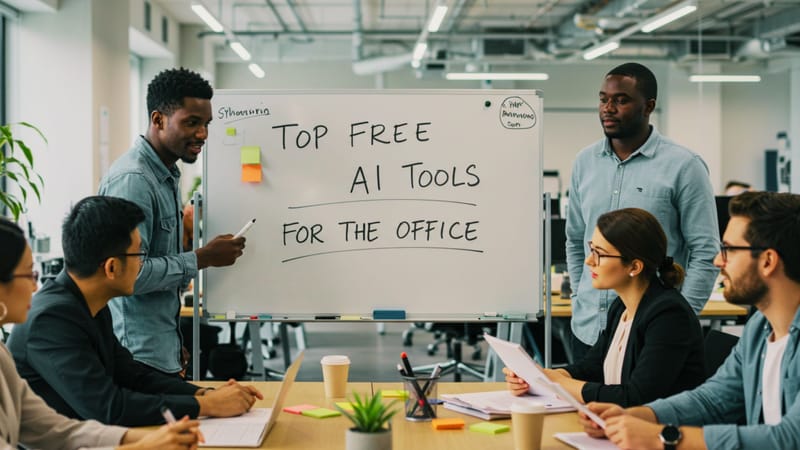The 5 Best Strategies for Managing a Slow but Skilled Employee.
Got a talented employee who's just not hitting the speed mark? It can be a real head-scratcher. While their skills shine, their pace can drag the team's momentum. So, what's the best way to handle a good but extremely slow employee?

Managing a talented yet slow employee can be challenging, particularly when deadlines loom. Although their skills are impressive, their slow pace may hinder the team's progress. The key is to find the most effective approach to support and accelerate a competent but notably slow employee
Understanding the Root Cause
First, it's crucial to identify the root cause before drawing any conclusions. Taking a step back to analyze the situation is important to determine why an employee is underperforming compared to the rest of the team. There could be multiple reasons, so it's essential to ascertain whether it's due to a single factor or a combination of factors.
- Insufficient Training: Perhaps they require additional guidance or training to accelerate their pace.
- Procrastination: This individual may be prone to procrastination.
- Perfectionism: They could be overly concerned with perfecting every detail.
- Personal Issues: Their work speed might be affected by external personal factors.
- Process Inefficiencies: At times, it is the workflow itself that is sluggish, rather than the person.
Communicate Openly
Start with a candid conversation. Use this opportunity to express your observations and concerns. Here’s a handy approach:
- Be Specific: Highlight specific instances where speed was an issue.
- Be Empathetic: Show understanding and support for their situation.
- Be Solution-Oriented: Discuss potential solutions together.
Set Clear Expectations
Clear expectations can be a game-changer. Ensure your employee knows what’s expected in terms of both quality and speed. Here’s how:
- Define Deadlines: Set realistic deadlines for tasks.
- Outline Priorities: Help them understand which tasks need to be completed first.
- Provide Resources: Equip them with the necessary tools and resources.
Provide Training and Support
Investing in training can significantly boost efficiency. Consider:
- Skill Workshops: Regular workshops to enhance their skills.
- Time Management Training: Courses focused on improving time management.
- Mentorship Programs: Pairing them with a faster, experienced employee.
Streamline Processes
Sometimes, the problem lies in the process. Assess and streamline your workflows to eliminate any bottlenecks.
- Automate Tasks: Use technology to automate repetitive tasks.
- Review Procedures: Regularly review and update procedures to enhance efficiency.
- Encourage Feedback: Get feedback from employees to identify slow points.
Use Performance Metrics
Implement performance metrics to track progress. This helps in identifying areas of improvement and recognizing achievements.
- Set KPIs: Establish Key Performance Indicators related to speed and efficiency.
- Regular Reviews: Conduct regular performance reviews.
- Constructive Feedback: Provide constructive feedback based on metrics.
Encourage a Growth Mindset
Fostering a growth mindset can motivate your employee to improve their pace without compromising on quality.
- Recognize Efforts: Acknowledge their hard work and achievements.
- Encourage Learning: Promote continuous learning and improvement.
- Supportive Environment: Create an environment that supports risk-taking and learning from mistakes.
Delegate and Redistribute Tasks
Sometimes, redistributing tasks can help balance the workload more effectively.
- Assess Strengths: Identify their strengths and delegate tasks accordingly.
- Team Collaboration: Encourage teamwork and collaboration.
- Flexible Roles: Be flexible with roles to better match tasks with skillsets.
Monitor and Adjust
Keep an eye on progress and be ready to make adjustments as needed. Continuous monitoring helps maintain a balance between speed and quality.
- Regular Check-ins: Schedule regular check-ins to discuss progress.
- Adapt Strategies: Be open to adjusting strategies based on outcomes.
- Celebrate Wins: Celebrate improvements, no matter how small.
FAQs
Q: How do I approach the conversation about speed without demotivating the employee? A: Approach with empathy, focusing on solutions and support rather than criticism. Highlight their strengths and express your confidence in their ability to improve.
Q: What if the employee's pace doesn’t improve despite efforts? A: If there's no improvement, consider repositioning them within the company where their skills are better suited or exploring alternative roles that align more with their working style.
Q: Can technology help improve efficiency? A: Absolutely. Tools for project management, automation, and time tracking can significantly enhance efficiency and reduce manual workload.
Take Away
Balancing quality and speed with a slow but skilled employee is no easy task. However, with the right strategies—understanding the root cause, setting clear expectations, providing support and training, streamlining processes, using performance metrics, encouraging a growth mindset, delegating tasks, and monitoring progress—you can help them find their stride and contribute effectively to your team. Remember, patience and support are key to fostering a productive and harmonious work environment.





